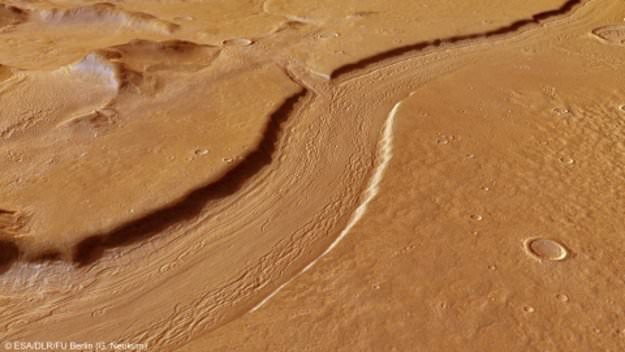For more than two years the Perseverance rover has been exploring Mars searching for life. It’s important when searching for life in unknown territory or on another planet for scientists to be aware and insightful of their surroundings. So they decided to have a look into a ridge that was believed to be carved out by a river billions of years ago. What they found were smoothly laid-out rocks, called Bedrock. Bedrock is a very smooth and bright rock that also forms on Earth only around water. The water smooths out the rock over time creating a very flat rock. So here’s scientists thinking, water on Earth made Bedrock here, then on Mars, there must have been water to form that bedrock as well. However, the theory goes much further than that, water is the key to life on Earth. All life needs water to survive on Earth in one way or another. But could there have been life on Mars that lived in this water? Not the big bug-eyed aliens in the UFOs that many think are in Area 51. But a microscopic life, possibly even plant life.
That is one of the reasons that the Perseverance rover came to Mars, to try and find evidence of microscopic life on Mars. It also came to Mars to collect samples which will hopefully be returned sometime in the early 2030s. But rovers on Mars have an easier time trying to look at the history of the planet Mars, because, unlike Earth, Mars doesn’t have rainy weather to ease its history. Most craters and ridges on Earth get covered up by dirt and water. But Mars doesn’t have anything like that to hide its secrets. So going into a crater means the deeper you go the older the rocks get and the more you can see what early Mars was like.
“Mars rover missions usually end up exploring bedrock in small, flat exposures in the immediate workspace of the rover,” said Katie Stack Morgan, a project scientist of Perseverance at NASA’s Jet Propulsion Laboratory “That’s why our science team was so keen to image and study Belva. Impact craters can offer grand views and vertical cuts that provide important clues to the origin of these rocks with a perspective and at a scale that we don’t usually experience.”
Perseverance will keep on exploring this landscape throughout the summer and hopefully will make some useful discoveries.

